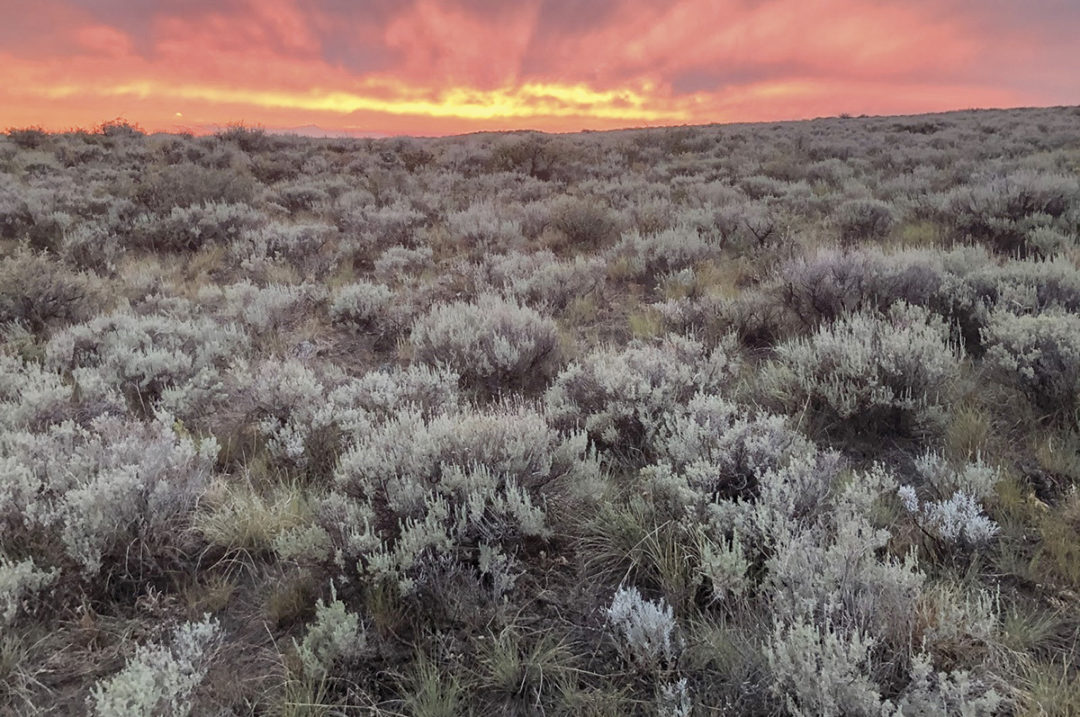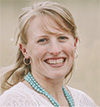“What’s really cool about sheep is the way they’re a part of the human story,” says Dr. Hailey Wilmer, research rangeland management specialist at the U.S. Sheep Experiment Station near Dubois. For millennia, sheep have provided their tenders with fiber, meat and milk products in diverse climates and landscapes. “To the extent that we have to understand their role in the landscape,” says Wilmer, “small ruminants are an important part of the food security story and landscape management around the world.”
Although U.S. numbers have declined since the late 1940s, domestic sheep grazing may yet play a part in achieving modern goals. From fine fuels reduction to invasive species management, says Wilmer, “we can use these old tools in the toolbox.”
Sheep production research
Known formally as the U.S. Range Sheep Production Efficiency Research Unit (Sheep Station), the Sheep Station is operated by the USDA Agricultural Research Service (ARS) in cooperation with the University of Idaho. Its headquarters include lambing facilities, pastures, offices, laboratories and residences. With nearly 50,000 acres spread across five locations, on which elevation ranges from under 5,000 feet to more than 8,500 feet, Sheep Station is uniquely equipped to study environments ranging from sagebrush steppe to subalpine meadows in Idaho and Montana.
 Polypay, Targhee and Columbia sheep – all breeds developed at the Dubois
ARS Sheep Station – graze prime big sagebrush habitat with the ARS
Rambouillet type that is also common in the West today. The foreground
was included in a burn 10 years previously, creating a mosaic burn
pattern for wildlife habitat, firebreak and perennial grass
rejuvenation. Photo by Sam Cox, ARS.
Polypay, Targhee and Columbia sheep – all breeds developed at the Dubois
ARS Sheep Station – graze prime big sagebrush habitat with the ARS
Rambouillet type that is also common in the West today. The foreground
was included in a burn 10 years previously, creating a mosaic burn
pattern for wildlife habitat, firebreak and perennial grass
rejuvenation. Photo by Sam Cox, ARS. Its headquarters’s location in Clark County is due to the foresight of local producers in the early 20th century. “It was set up here because ranchers in this region knew research would be important to their ability to adapt and thrive in this environment,” Wilmer says. Historical documents indicate the availability of an appropriately sized parcel of public domain land accessible by railroad was another deciding factor.
At its founding in 1916, Sheep Station’s work focused on production – raising as much meat and wool as possible. Its researchers have had a hand in developing the Columbia, Targhee and Polypay composite breeds – all meat and wool sheep bred to survive on Western rangelands.
Today, Wilmer says, Sheep Station researchers tend to look at things through an agro-ecological lens. “The way we use rangeland is changing,” she says. Research at the station is as likely to consider grazing interactions with fire, herbicides and wildlife as the basic production questions of days past. But it is still the home of range sheep production science, and its researchers address questions that matter to producers.
“We can take a birds-eye view of trade-offs and synergies between different goals and priorities on rangelands,” Wilmer says. “It gives us a living laboratory where we can take complexity into account.”
Addressing multiple uses over a broad region
Wilmer is uniquely fitted to the role she assumed in the summer of 2021: the first range scientist at Sheep Station in a decade. “I’m trained as both a social scientist and a range management specialist,” she says. Her previous work in Colorado required that she develop close relationships with ranchers and agency personnel.
“I’m used to working with ranchers and land managers to translate their knowledge to science and agencies,” she says. “They have a great deal of knowledge from mastery of their job.”
 A Sheep Station flock grazes sagebrush steppe while a guard dog keeps watch. Photo by Hailey Wilmer, ARS.
A Sheep Station flock grazes sagebrush steppe while a guard dog keeps watch. Photo by Hailey Wilmer, ARS.
In designing her research program, she has sought input from regional stakeholders, including sheep producers. “We’re open to taking feedback from [the ag community] on what issues they’re facing,” she says.
Though much of their work is most directly applicable to local producers, researchers at Sheep Station serve producers as far away as western Colorado. The Greater Yellowstone Area, in particular, is important because of local and national interest. “A lot of people care about these ecosystems,” Wilmer says. As stakeholders increase, so does the value of quantifying impacts of management decisions.
Current projects
Wilmer’s current work includes continuing projects she inherited with the job. One experiment at headquarters looks at the impacts of timed grazing and rest after fire. “The conversation about prescribed fire is back in play,” she says. The study’s treatments include post-fire spring and fall grazing, one to two years of rest and no grazing.
“We can get some solid data to support decisions folks are making about resting after fire and grazing in those systems,” Wilmer says.
In future research, Wilmer plans to examine grazing interactions with wildlife, invasive species, extreme weather and conservation goals. These basic questions quickly increase in complexity in context of seasonal grazing and diverse vegetation communities.
Wilmer also hopes to emphasize vegetation monitoring and experimentation in systems above 8,000 feet elevation. These systems often occur in remote areas accessible only on horseback. However, comparing current vegetation communities to existing data from the 1960s and ’70s can be fruitful.
The range program is also expanding. The ARS team will gain a new range technician this spring and hopes to recruit another range scientist soon. Wilmer has also secured funding for a temporary researcher to improve the station’s ability to digitally classify images gleaned from camera traps. These photos are useful for range monitoring and tracking livestock-with-wildlife interactions, but only if they can be reliably cataloged.
Maintaining relevance in a changing world
One important aspect of the researchers’ work at Sheep Station is its relevance to public lands grazing. “The more we can quantify changes and effects of grazing, the better,” says Wilmer. Public lands agencies depend on science generated by researchers to make (and justify) decisions that have long-term impact.
Their research also helps producers make informed decisions on private lands. Modern managers must consider issues such as invasive species, wildfires, drought and threatened plants and animals. Having a framework for decision-making is increasingly important.
That is one reason Sheep Station’s multiple locations matter so much. Elevation, local climate and vegetation communities affect producers’ options and the way animals and plants respond to management decisions. “You can’t assume you know what sheep production is like from one valley to the next in Idaho,” Wilmer says. “Context and challenges are always changing.”



.jpg?t=1687979285&width=640)





